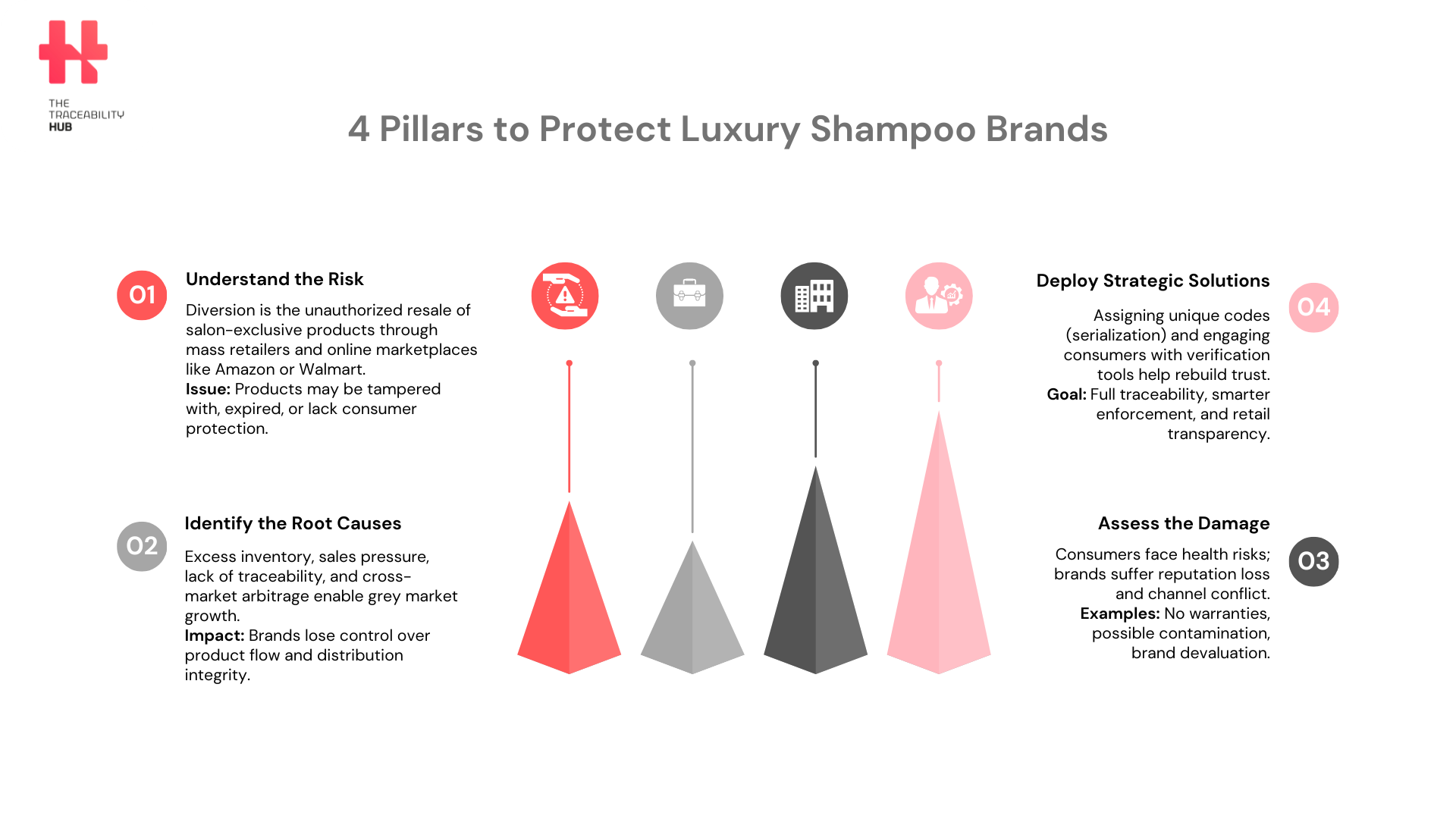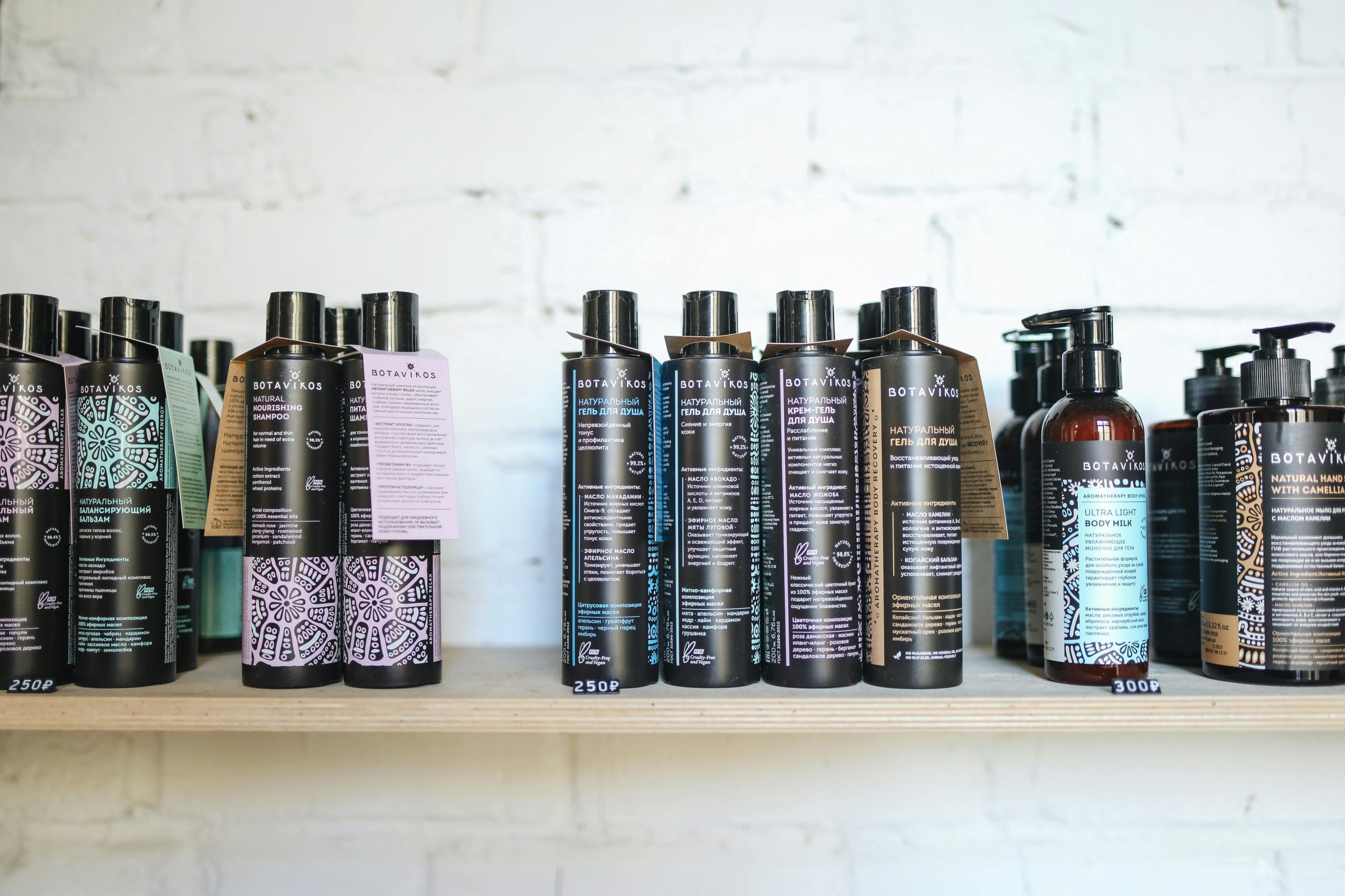Understanding the Grey Market Challenge
The grey market, often called product diversion, is becoming a real headache for luxury personal care brands, especially in professional haircare. Once upon a time, these products were found only in high-end salons. Now, they’re popping up on drugstore shelves, parallel trade and all over the internet. It may seem harmless, maybe even convenient, but this kind of unauthorized product sales seriously chips away at a brand’s reputation. It can create safety risks for the very consumers they’re trying to impress.
What Is Product Diversion?
Diversion is what happens when a product ends up somewhere it was never meant to be. For luxury shampoos, beauty product and other salon-grade items, this often means being sold through channels that the brand never approved. Think to third-party resellers like:
- Big online platforms and marketplaces
- Retail giants
- Beauty supply sites where anyone can shop, no license required
Even if the product looks authentic, it may have been altered, diluted, or is simply too old to be effective or safe. In many cases, labels are changed, barcodes are removed, key information and traceability is gone. That leaves consumers (and brands) with more questions than answers.
Why Diversion Happens
There’s no single reason why product diversion happens. it’s often a mix of circumstances and missed controls:
- Excess inventory or discontinued SKUs: When brands or distributors have too much stock or products they’re phasing out, they sometimes sell them off to third-party resellers who may push them through unauthorized routes.
- Sales pressure: Also official distributors, trying to hit their numbers, may bend the rules and sell to whoever will buy, just to stay afloat.
- Lack of traceability for product diversion: If individual products can’t be tracked, it’s nearly impossible to know where they went or who sold them.
- Cross-market arbitrage: Products meant for lower-priced or developing markets, with lower prices, often find their way back into more lucrative ones, like the U.S., where they’re resold for higher margins.
Thanks to the global reach of e-commerce and marketplace, diverters have more tools and opportunities than ever before.
Why Grey Markets Hurt Brands: The Risks for Brands
For luxury shampoo brands, diversion does more than just annoy distributors, it comes with some serious side effects:
- Reputational damage: When a diverted product disappoints or causes an issue, customers don’t blame the reseller, they blame the brand.
- Loss of control: Once a product is out of authorized hands, there’s no way to ensure how it’s stored, handled, or supported.
- Channel conflict: Salon owners and professional partners feel burned when their exclusive products suddenly show up in retail stores at questionable prices.
- Erosion of premium positioning: Seeing a “luxury” shampoo in a discount bin? That instantly lowers its perceived value and the brand’s status and reputation.
4 Pillars to Protect Luxury Shampoo Brands

Product Diversion: The Risks for Consumers
Consumers are often left in the dark when it comes to diverted products:
- No warranty or customer support: Buying from unauthorized resellers usually means no refunds, no guarantees, and no help if something goes wrong.
- Safety and health risks: There’s a real danger here. These products (cosmetics & fragrances) can be tampered with, expired, or downright unsafe and there’s no barcode trail or logistic history for recalls.
- Label and ingredient mismatch: What’s on the label might not be what’s in the bottle, increasing the risk of irritation, skin damage or worse.
- Environmental impact of product diversion: Unmanaged inventory in the grey market often ends up as waste, contributing to landfill overload and sustainability issues.
Anti-diversion Strategies Solution: Serialization and Traceability
So how do luxury brands take back control? The answer lies in smart tech, specifically, serialization and traceability for product diversion. These tools give each product a digital identity that tracks it from production to point-of-sale.
- Unique Datamatrix codes: Every item gets a unique code, which makes it easy to follow across the supply chain.
- Aggregation techniques: This links each unit to its batch and case.
- Invisible UV markings: These help verify product authenticity without changing how the product looks to the customer.
- Manual or automated code scanning: Scans at different points help confirm in a unique and certain way where the product is and where it’s supposed to be.
Beyond just fighting diversion, these anti-diversion strategies help with everything from recalls to compliance and inventory optimization.
Anti-diversion Strategies: The Role of Consumers
Consumers can be a powerful part of the solution, too if brands bring them into the loop. Here’s how to identify grey market products:
- Scan-before-purchase tools: Simple apps or codes allow shoppers to confirm if a product came through the right channels.
- Mobile apps that track product origin and reward participation: Give customers a way to verify product authenticity and reward them for doing it.
- Clear packaging indicators: Tamper-proof seals, smart barcodes, and educational materials help shoppers make informed choices.
Making consumers active players in product verification helps build trust and strengthen brand protection.
Beauty Product Diversion: The Blurred Line Between Prestige and Mass
Today’s beauty shelves look a lot different than they used to. Stores bring salon-quality, drugstore, and luxury products under one roof. While this makes shopping easier, it also blurs the lines between categories:
- Confusion around brand positioning: Shoppers can’t always tell what’s luxury and what’s mass-market.
- Increased temptation for brands to sell through multiple channels and off-channel sales: Brands looking for growth may risk dilution by being too accessible.
- Erosion of traditional exclusivity in luxury distribution: When everyone can buy it everywhere, it stops feeling special.
For brands built on exclusivity, this new landscape brings serious challenges to their identity.
Protecting Brand Integrity in a Shifting Landscape
Grey market diversion is a full-blown brand identity crisis. To protect themselves, luxury shampoo brands need more than just reactive fixes. They need end-to-end visibility, smarter distribution strategies, and tighter retail relationships.
Serialization technology and luxury product traceability systems give brands a digital backbone to track their products and enforce rules. Meanwhile, retailers, third-party resellers and distributors need clear expectations and consequences when those rules are broken. And don’t forget the consumer. Keeping them educated and empowered is essential.
In the end, this isn’t just about stopping unauthorized product sales. It’s about preserving the essence of what makes luxury brands desirable in the first place: trust, safety, and exclusivity. Without those, even the best product can lose its shine.






